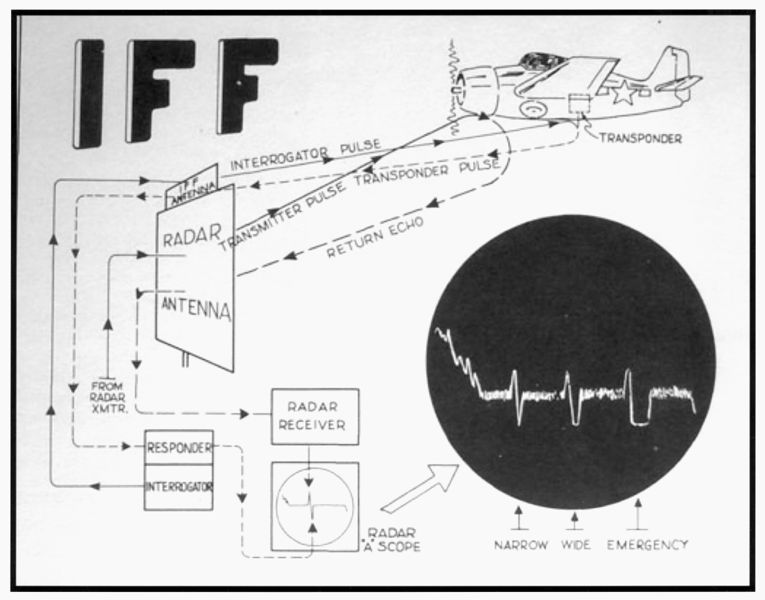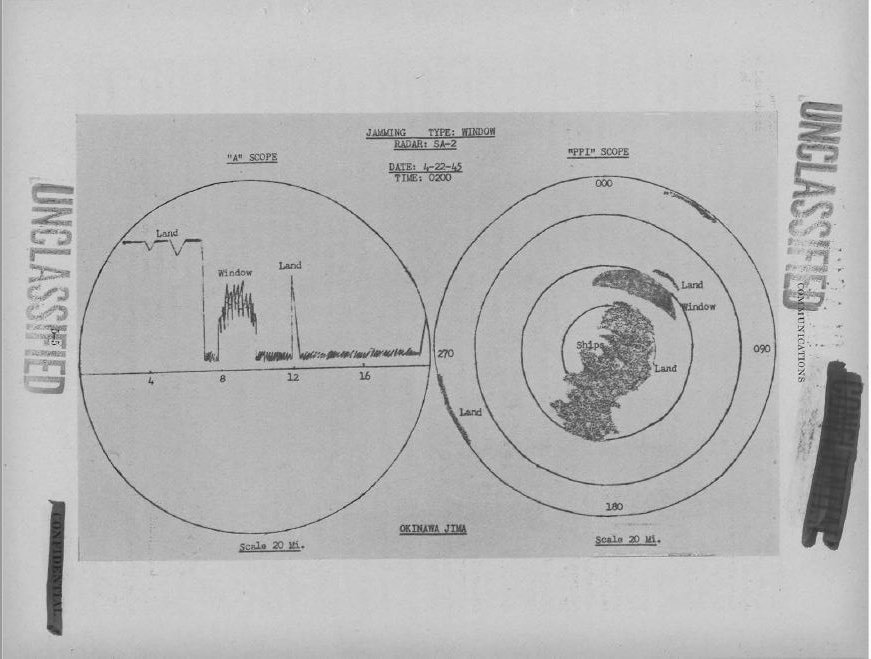@MilAvHistory & @CBI_PTO_History have a great video on the February 1942 IJN attack on USN carrier Task Force 11. (link & title in @MilAvHistory tweet) watch the whole thing.
This thread is going to expand on the "Scope dope" of that engagement. /1 https://twitter.com/MilAvHistory/status/1359940360701702157
This thread is going to expand on the "Scope dope" of that engagement. /1 https://twitter.com/MilAvHistory/status/1359940360701702157
The book "Radar and the Fighter Directors" by David L. Boslaugh, Capt USN, Retired is on-line at the Engineering & Technology History Wiki.
The TF 11 engagement is covered here:
The CXAM Goes to War - Chapter 6 of Radar and the Fighter Directors
http://ethw.org/The_CXAM_Goes_to_War_-_Chapter_6_of_Radar_and_the_Fighter_Directors
/2
The TF 11 engagement is covered here:
The CXAM Goes to War - Chapter 6 of Radar and the Fighter Directors
http://ethw.org/The_CXAM_Goes_to_War_-_Chapter_6_of_Radar_and_the_Fighter_Directors
/2
The "Scope dope" I'm going to talk about applies at about
~31:30 in @MilAvHistory video.
See at the time hack in the link below./3
~31:30 in @MilAvHistory video.
See at the time hack in the link below./3
@MilAvHistory mentions the issue of PPI versus "A" scopes.
The image below is a simplified "A-scope." which was the standard oscilloscope presentation then & is still used in the electronics industry today.
The line at the bottom is the 'time" base and the echo is a "pip."/4
The image below is a simplified "A-scope." which was the standard oscilloscope presentation then & is still used in the electronics industry today.
The line at the bottom is the 'time" base and the echo is a "pip."/4
This is a simplified image of a PPI scope. PPI stands for ether plain position indicator or polar position indicator. Both terms were used at the time.
The PPI scope was the graphical user interface of its time.
It's a time base of an A-scope rotated around a central point/5
The PPI scope was the graphical user interface of its time.
It's a time base of an A-scope rotated around a central point/5
The CXAM radar on USS Lexington lacked a PPI scope in Feb 1942.
More importantly, it lacked identification friend or foe (IFF) secondary radar.
None of the A/C on "Lady Lex" has the UK Mark II IFF transponders that responded to the CXAM's radar pulses.
Type III IFF was /6
More importantly, it lacked identification friend or foe (IFF) secondary radar.
None of the A/C on "Lady Lex" has the UK Mark II IFF transponders that responded to the CXAM's radar pulses.
Type III IFF was /6
...a year in the future.
The Fighter Direction Officer (FDO, also knick-named "vector vendors" by pilots) on TF 11 had to send his CAP fighters to investigate every "pip."
This was not a issue for TF 11 in Feb 1942.
It was a huge issue in later 1942 carrier battles. /7
The Fighter Direction Officer (FDO, also knick-named "vector vendors" by pilots) on TF 11 had to send his CAP fighters to investigate every "pip."
This was not a issue for TF 11 in Feb 1942.
It was a huge issue in later 1942 carrier battles. /7
Both the Battle of Coral Sea from 4 to 8 May 1942, and the Battle of the Santa Cruz Islands, fought during 25–27 Oct. 1942 were dominated by issues of flawed fighter direction.
F.D. that was handicapped by either a lack of IFF (Coral Sea) or interface issues (Santa Cruz). /8
F.D. that was handicapped by either a lack of IFF (Coral Sea) or interface issues (Santa Cruz). /8
This "interface issue" in the later battles also happened with TF 11. The "A-scope" of USS Lexington's CXAM radar had a short range 50 mile maximum setting and a long range setting.
When you used the 50-mile range, "2nd echoes" from longer range 'pips' could appear on top /9
When you used the 50-mile range, "2nd echoes" from longer range 'pips' could appear on top /9
...of your position. This required the radar operator to hold the CXAM radar on top of the pip and alternate between the long and short range A-scope setting.
If you are concentrating your radar on one pip. You lose situational awareness on everything else./10
If you are concentrating your radar on one pip. You lose situational awareness on everything else./10
The after action report on the Battle of Savo Island made the USN manic in avoiding the loss of situational awareness with its radars.
You can see this via proliferation of radars on late WW2 CVE's (photo) that have one radar (SK) to inspect a pip while others search. /10
You can see this via proliferation of radars on late WW2 CVE's (photo) that have one radar (SK) to inspect a pip while others search. /10
You could also see this mania in the proliferation of cathode ray tube (CRT) radar scope presentations (photo).
The A-scope and PPI scope were USN independent inventions.
The J-scope was a German CRT type that beat the A-scope log/short interface issue by wrapping the time/11
The A-scope and PPI scope were USN independent inventions.
The J-scope was a German CRT type that beat the A-scope log/short interface issue by wrapping the time/11
...base around the edge of the CRT.
The "modified A-scope," "B-scope" & "C-scope" came from UK-US night fighter radar cooperation in trying to display range, azimuth & altitude for airborne intercept.
All CRT display types were used by the USN in WW2, but the PPI was the /12
The "modified A-scope," "B-scope" & "C-scope" came from UK-US night fighter radar cooperation in trying to display range, azimuth & altitude for airborne intercept.
All CRT display types were used by the USN in WW2, but the PPI was the /12
...preferred FD type display.
This mania for radar situational awareness had a mixed legacy. The PPI set on short range did not show "2nd echoes" like an A-scope.
However, at long range, an A-scope was more sensitive for the same radar signal & harder to fool with window /13.
This mania for radar situational awareness had a mixed legacy. The PPI set on short range did not show "2nd echoes" like an A-scope.
However, at long range, an A-scope was more sensitive for the same radar signal & harder to fool with window /13.
This USN mania for radar situational awareness had a name.
The name was Fleet Admiral Ernest J. King. The man who was Chief of Naval Operations from March 1942 to December 1945.
A few months after taking office as COMINCH, King centralized radar development under himself./14
The name was Fleet Admiral Ernest J. King. The man who was Chief of Naval Operations from March 1942 to December 1945.
A few months after taking office as COMINCH, King centralized radar development under himself./14
King was a zealot in all things he did.
From chasing the wives of his fellow officers, to pursuing and venting his towering rage on the perceived enemies of the US Navy both internal and external, he was a zealot.
The mixed legacy of this zealotry showed up for TF 11. /15
From chasing the wives of his fellow officers, to pursuing and venting his towering rage on the perceived enemies of the US Navy both internal and external, he was a zealot.
The mixed legacy of this zealotry showed up for TF 11. /15
Per Boslaugh:
"...King expressed his displeasure that the first CAP had spent time and ammunition chasing a retreating formation, stating, “..fighter patrol primary function is protection of surface units and not pursuing planes retiring.” "/16
"...King expressed his displeasure that the first CAP had spent time and ammunition chasing a retreating formation, stating, “..fighter patrol primary function is protection of surface units and not pursuing planes retiring.” "/16
Also Per Boslaugh, after Coral Sea,
"...King, wrote, “This project is well in hand for new construction.” He also expressed, “...the urgent need for fighter director doctrine and experienced directors.” Reflecting on this comment, former /17
"...King, wrote, “This project is well in hand for new construction.” He also expressed, “...the urgent need for fighter director doctrine and experienced directors.” Reflecting on this comment, former /17
...FDO CAPT “Nick” Hammond wrote in 1988, “Looking back on those days, one wonders where those ‘experienced directors’ were supposed to come from. The most experienced people were those that just went through the Battle of the Coral Sea.”
There was a source for more.../18
There was a source for more.../18
..experienced FDO's for CAPT “Nick” Hammond, the UK's Royal Navy in the form of a British carrier—the HMS Victorious.
Her FDO was a veteran of Operation Pedestal, the most intense CV versus airpower fight of 1942./19
https://en.wikipedia.org/wiki/Operation_Pedestal
Her FDO was a veteran of Operation Pedestal, the most intense CV versus airpower fight of 1942./19
https://en.wikipedia.org/wiki/Operation_Pedestal
Operation Pedestal was the decisive carrier fleet battle of 1942, because the relief of Malta occurred in the decisive theater with the strongest Axis powers.
German-Italian airpower was stronger than the Kidō Butai at Midway, and lost to weaker carrier air groups./20
German-Italian airpower was stronger than the Kidō Butai at Midway, and lost to weaker carrier air groups./20
The reason why the RN won was fighter direction officer Commander Jason Borthwick (RN)./21
See:
William Jason Maxwell Borthwick
http://en.wikipedia.org/wiki/William_Jason_Maxwell_Borthwick
See:
William Jason Maxwell Borthwick
http://en.wikipedia.org/wiki/William_Jason_Maxwell_Borthwick
Commander Borthwick was HMS Victorious' FDO in Operation Pedestal and brought that experience to the South Pacific when USS Saratoga was the last operational USN carrier./22
See:
USS Robin - The Victorious U.S. Carrier that Didn't Exist
By Joseph Tremain
http://www.armchairgeneral.com/uss-robin-the-victorious-u-s-carrier-that-didnt-exist.htm
See:
USS Robin - The Victorious U.S. Carrier that Didn't Exist
By Joseph Tremain
http://www.armchairgeneral.com/uss-robin-the-victorious-u-s-carrier-that-didnt-exist.htm
Commander Borthwick had a whole hell of a lot to teach US Navy FDO's like CAPT “Nick” Hammond./23
See:
Royal Navy WW2 fighter direction
Navigating and Direction Officers' Association
http://www.ndassoc.net/docs/nd-assoc-fighter-direction.pdf
See:
Royal Navy WW2 fighter direction
Navigating and Direction Officers' Association
http://www.ndassoc.net/docs/nd-assoc-fighter-direction.pdf
You will not find any of that in David L. Boslaugh's "Radar and the Fighter Directors."
You will find Lieutenant Commander Charles Coke's (RN) training of USN FDO's, but not Borthwick's techniques that went into the USN PAC-10 CV doctrine./24
See:
https://ethw.org/The_Beginnings_of_Naval_Fighter_Direction_-_Chapter_5_of_Radar_and_the_Fighter_Directors
You will find Lieutenant Commander Charles Coke's (RN) training of USN FDO's, but not Borthwick's techniques that went into the USN PAC-10 CV doctrine./24
See:
https://ethw.org/The_Beginnings_of_Naval_Fighter_Direction_-_Chapter_5_of_Radar_and_the_Fighter_Directors
The reason that is boils down to the mixed legacy of Adm. King.
If there was one thing he hated more than General MacArthur, it was the Royal Navy.
Borthwick's contributions to PAC-10 were squeegeed out of the USN's historical narrative with a Stalinist razor and glue. /25
If there was one thing he hated more than General MacArthur, it was the Royal Navy.
Borthwick's contributions to PAC-10 were squeegeed out of the USN's historical narrative with a Stalinist razor and glue. /25
Since Boslaugh's book "Radar and the Fighter Directors" uses USN sources.
It reflects Adm. King's preferred narrative.
A narrative that excludes Borthwick. /end
It reflects Adm. King's preferred narrative.
A narrative that excludes Borthwick. /end

 Read on Twitter
Read on Twitter



















